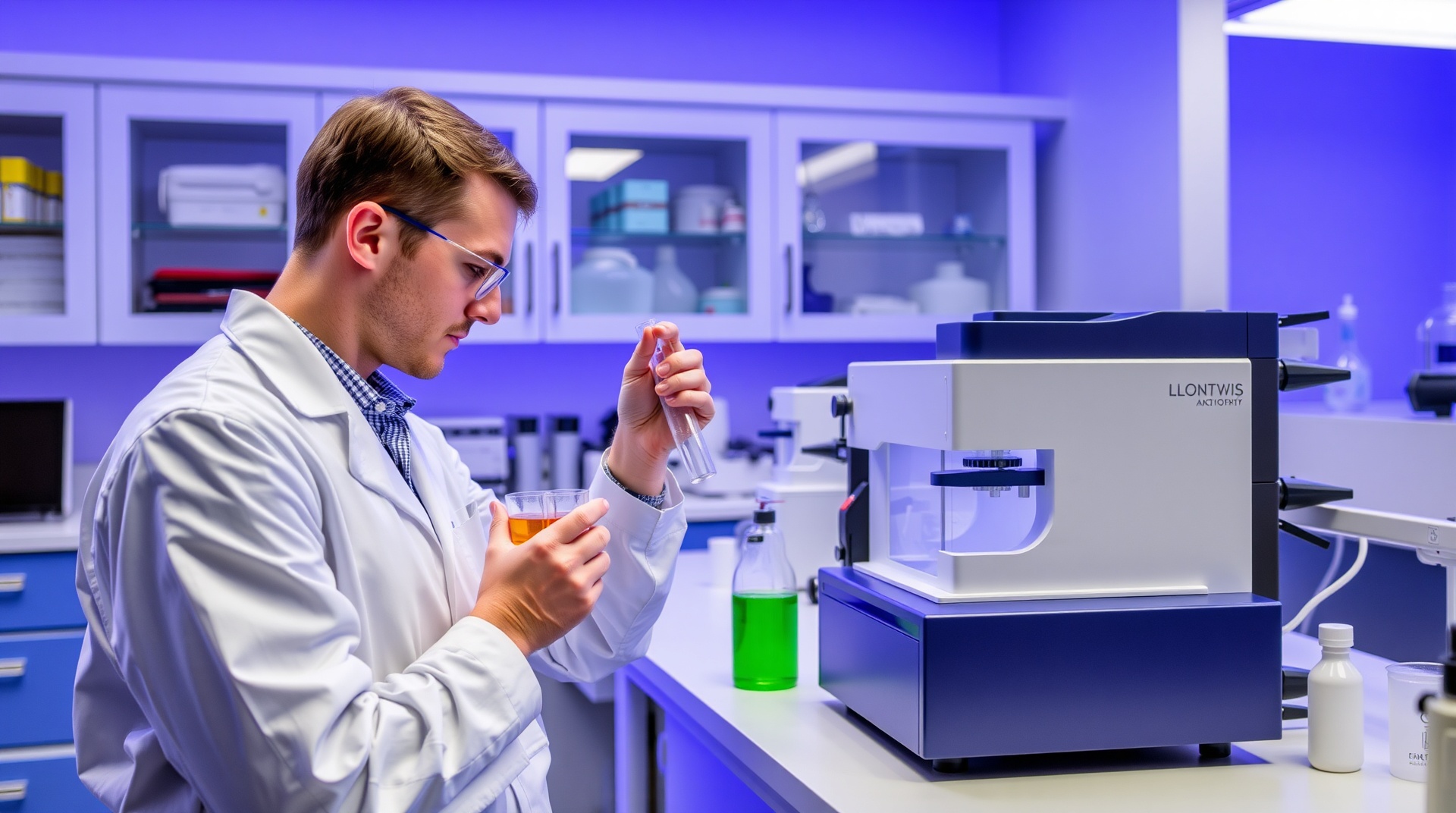
Beer's LawAbsorbance Calculator
Calculate absorbance or concentration using Beer's Law. Ideal for spectrophotometry, lab work, and chemistry students. Accurate, fast, and free.
What is Beer's Law?
Beer's Law (also known as the Beer-Lambert Law) is a fundamental principle in spectrophotometry that describes the relationship between the absorbance of light and the concentration of a solution. This calculator solves the Beer-Lambert Law equation to calculate absorbance, concentration, or extinction coefficient based on the other known variables.
The law states that absorbance is directly proportional to both the concentration of the absorbing species and the path length through which light travels. This relationship makes it possible to determine unknown concentrations by measuring absorbance, which is the foundation of quantitative spectrophotometry.
How to Use
- 1Choose what you want to calculate: Absorbance, Concentration, or Extinction Coefficient
- 2Enter the known values in the appropriate fields
- 3Path length is usually 1 cm for standard cuvettes
- 4Click "Calculate" to get your result with scientific notation for extreme values
Beer's Law Formula
The Beer-Lambert Law
A = ε × c × l
Where:
- • A = Absorbance (unitless)
- • ε = Extinction coefficient (L/mol·cm)
- • c = Concentration (mol/L)
- • l = Path length (cm)
Solving for Different Variables
Absorbance: A = ε × c × l
Concentration: c = A / (ε × l)
Extinction Coefficient: ε = A / (c × l)
Beer's Law Visualization
Diagram: Beer's Law visualization showing light attenuation through a sample with path length l, following the equation A = ε × c × l.
Key Components:
- • Incident light intensity (I₀)
- • Transmitted light intensity (I)
- • Sample cuvette with path length l
- • Absorbing species concentration c
Applications:
- • Concentration determination
- • Purity assessment
- • Kinetic studies
- • Quality control
Absorbance vs Concentration Relationship
Graph: Linear relationship between absorbance and concentration showing Beer's Law validity, with slope = ε × l.
Linear Relationship:
- • Slope = ε × l
- • Y-intercept = 0
- • R² typically > 0.99
- • Valid for dilute solutions
Practical Uses:
- • Calibration curves
- • Unknown concentration determination
- • Method validation
- • Quality assurance
Cuvette Path Length
Illustration: Cuvette cross-section showing path length l (typically 1 cm for standard cuvettes) through which light travels.
Standard Path Lengths:
- • 1 cm (most common)
- • 0.5 cm (high concentration)
- • 2 cm (low concentration)
- • 5 cm or 10 cm (very low concentration)
Cuvette Materials:
- • Quartz (UV and visible)
- • Glass (visible light only)
- • Plastic (disposable, visible)
- • Infrared materials (IR spectroscopy)
Understanding Beer's Law in Spectrophotometry
Beer's Law is the cornerstone of quantitative spectrophotometry, providing the mathematical foundation for concentration determination using absorbance measurements. This fundamental relationship enables scientists to quantify analytes in solution by measuring how much light they absorb at specific wavelengths. The law assumes that each molecule independently absorbs light, creating a direct proportional relationship between concentration and absorbance.
In practice, Beer's Law is extensively used in analytical chemistry laboratories for routine analysis. The extinction coefficient (ε) is a unique property of each compound at a specific wavelength, representing how strongly it absorbs light. This parameter is crucial for accurate concentration calculations and can be determined experimentally or found in spectroscopic databases for known compounds.
The path length component of Beer's Law highlights the importance of consistent sample containers. Standard spectrophotometric cuvettes have a 1 cm path length, but specialized cuvettes with different dimensions are used for samples with very high or very low concentrations. Understanding this relationship helps optimize analytical methods for different concentration ranges.
Real-world applications of Beer's Law span numerous fields. In protein analysis, it's used to determine protein concentrations at 280 nm, where aromatic amino acids absorb strongly. For nucleic acid analysis, measurements at 260 nm quantify DNA and RNA concentrations. Environmental monitoring uses Beer's Law to measure pollutant concentrations, while pharmaceutical analysis relies on it for drug quantification and quality control.
However, Beer's Law has limitations that must be considered for accurate results. The law is only valid for dilute solutions (typically below 0.1 M) where molecular interactions are minimal. At higher concentrations, molecules can interact with each other, changing their absorption properties and causing deviations from linearity. Additionally, the law assumes monochromatic light and homogeneous samples without scattering particles.
Modern spectrophotometers have greatly improved the precision and accuracy of Beer's Law applications. These instruments use sophisticated optics to provide narrow-bandwidth light and sensitive detectors for precise absorbance measurements. Understanding the principles behind Beer's Law enables scientists to design better analytical methods and interpret results with confidence.
Common Applications
| Application | Wavelength | Typical Range | Common Use |
|---|---|---|---|
| Protein (A280) | 280 nm | 0.1-3 mg/mL | Purification monitoring |
| DNA/RNA (A260) | 260 nm | 10-100 μg/mL | Molecular biology |
| Enzyme Assays | 340 nm | 0.1-1 mM | NADH monitoring |
| Metal Analysis | Variable | ppm to mM | Environmental testing |
Table: Common applications of Beer's Law in different analytical fields with typical wavelengths and concentration ranges.
Related Calculators
Beer's Law Calculator
User Reviews
Based on 3 reviews
Dr. Robert Kim
1 week agoPerfect for teaching Beer's Law! Students love the different calculation modes. Very intuitive interface and accurate results.
Lisa Chen
2 weeks agoExcellent tool for analytical chemistry lab. The ability to solve for any variable makes it incredibly versatile.
Prof. Martinez
3 weeks agoGreat calculator for spectrophotometry work. The scientific notation feature is particularly useful for extreme values.
Frequently Asked Questions
Need More Biology Tools?
Explore our comprehensive collection of biology calculators
Explore More Biology Tools